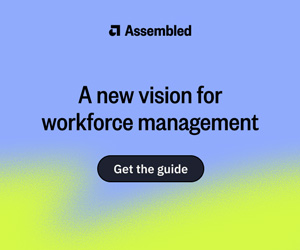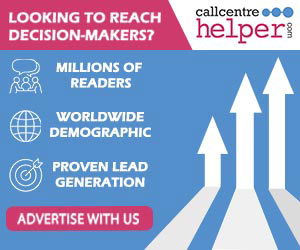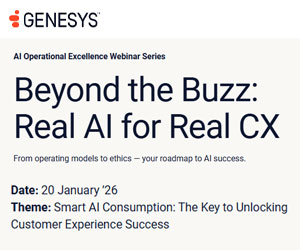How the nation’s labour market evolves in the coming months is of great interest to anyone with a keen eye on the economy, after the government announced in January 2025 its plans to make the UK an ‘AI superpower’ and prioritize artificial intelligence implementation across private and public sectors.
The contact centre has long been seen as an industry primed for artificial intelligence adoption.
AI-powered and automation technologies such as interactive voice response (IVR) and automatic call distribution (ACD) have existed in different guises since the last century.
Other tools such as chatbots – so often heralded as the primary example of how AI has influenced contact centres and the wider workplace – have been in continuous development since the early 2000s.
As a result, contact centres have been at the heart of AI’s technological shift for some time. However, there remain fundamental factors determining what makes the implementation of AI and other new technologies a success.
In the 2025 report: The Impact of Technology and Economic Shifts on UK Consumers, the CCMA (Contact Centre Management Association) drills down into these factors.
The research, comprising a survey of 500 members of the public across the UK, found that almost two in three respondents (63%) believe technology is making work easier.
However, there is clear evidence that consumers continue to see the retention – and loss – of human contact as a key indicator for whether technology is having a positive or negative impact on the workplace.
Losing Human Contact Is Our Biggest Technology Concern
When asked ‘which of the following would you agree are potential risks of applying technology in the workplace?’, 57% of The Impact of Technology and Economic Shifts on UK Consumers respondents stated ‘less human contact’ was the greatest risk.
This was particularly felt among respondents aged 55-plus, with 70% stating less human contact was their biggest concern.
49% of 35–54 year-olds were most concerned about losing human contact as a result of technology, compared with 43% of 18–34 year-olds.
The risk of people’s jobs being eliminated was the second greatest concern among respondents, with 52% stating this as an issue that needs addressing.
Workloads Are Increasing, but Technology Can Help
While technology is widely viewed as a tool that simplifies tasks, many people are feeling the pressure of heavier workloads.
In fact, 45% of employed individuals and students reported that their workload has increased over the past year.
Still, the majority – nearly two-thirds of the public – believe technology is easing the demands of work. Younger respondents, in particular, tend to have a more positive outlook on how tech can simplify their professional lives.
Older adults, on the other hand, tend to highlight different advantages of workplace technology. They place greater value on improved access to information and the automation of routine tasks.
For younger people aged 18–34, however, the most compelling benefit is the emergence of new career and job opportunities.
Job security remains relatively strong, with 78% of those working either full or part-time saying they feel at least somewhat secure. Yet the strain of increasing workloads remains a concern for many – especially students and workers.
As demands grow, technology plays a crucial role in managing that pressure. Only a small minority – just 9% – felt that technology actually makes their work harder.
Most of Us Need Learning and Development Support
Learning and development is seen as being a vital cornerstone for the technological and AI shift in the workplace. 70% of respondents accept that retraining and learning is needed to effectively use technology at work.
When asked to rate their employer’s learning and development, a majority (59%) of those in full-time and part-time employment offer positive ratings.
However, employers’ learning and development is meeting the needs of older colleagues less well, and a key part of the AI transition in the coming months and years will be how successful organizations are at upskilling older members of the workforce.
Humans in the Loop Will Remain an Expectation in Contact Resolution
In customer contact, there remains a clear preference for human interaction. Consumers are more inclined to want more human involvement in the process, rather than less.
Most people feel that having access to a human advisor increases the likelihood that their issue will be properly addressed.
Key reasons cited include enhanced customer satisfaction (58%) and the greater empathy (47%) that human agents are able to provide – factors seen as essential for businesses and contact centres aiming to deliver a high-quality service experience.
To view the full research findings from The Impact of Technology and Economic Shifts on UK Consumers visit: https://www.ccma.org.uk/the-impact-of-technology-and-economic-shifts-on-uk-consumers.
Author: CCMA
Reviewed by: Megan Jones
Published On: 21st May 2025
Read more about - Industry News, CCMA





































